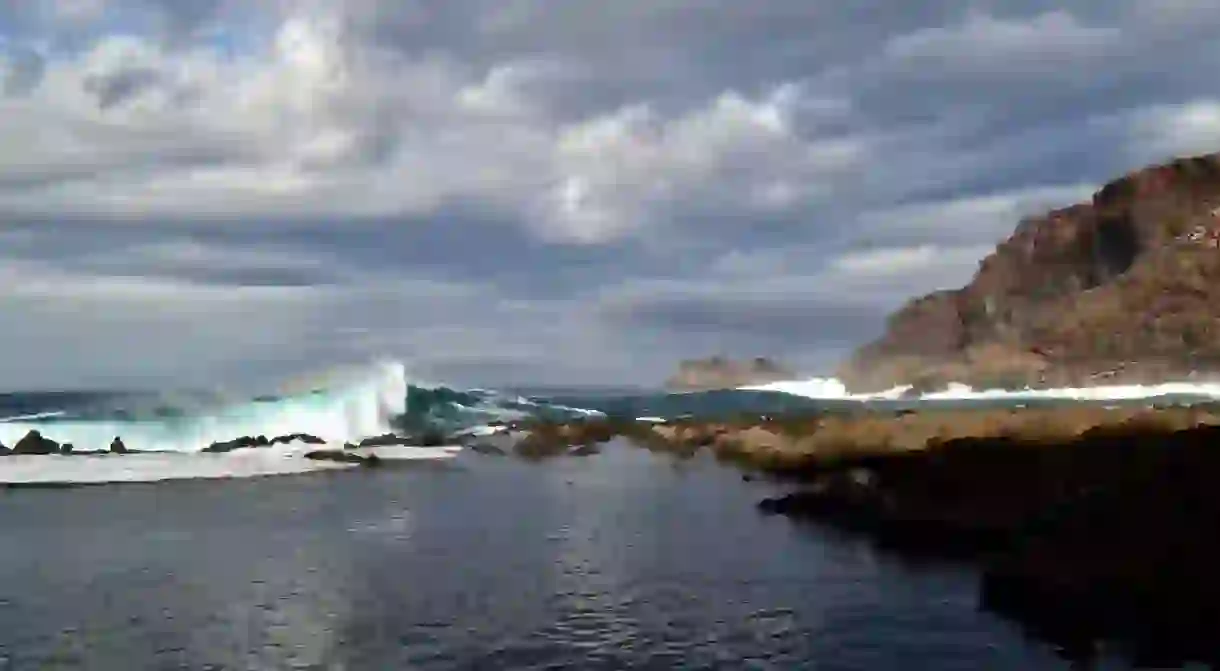The Top Things to See and Do in El Hierro

El Hierro is the smallest and most remote of the Canary Islands, and was considered by many as the end of the world until Columbus sailed beyond its shores and out into the unknown. With its high, craggy cliffs dashed by Atlantic swell, thick juniper groves, pine forests, and incredible volcanic rock formations, it’s easy to see why the island was declared a UNESCO biosphere reserve. With only around 20,000 tourists per year, it’s also a great getaway away from the crowds. These are some of the best things to see and do while you’re here.
Did you know – Culture Trip now does bookable, small-group trips? Pick from authentic, immersive Epic Trips, compact and action-packed Mini Trips and sparkling, expansive Sailing Trips.
The forest hiking trails
Immerse yourself in nature with a hike along the various paths winding through the El Pinar pine forest. Choose from one of the many trails forking off from the main road. The pines cover a large part of the southern hemisphere of the island and connect to the Ermita de Nuestra Señora de Los Reyes on the west side.
The unspoilt beaches
While El Hierro is the smallest of the the Canary Islands, it can boast some of the finest, and unspoilt beaches in the archipelago. The best beaches on the island are located along the south coast, with one of the best – and most popular – being Playa de Tacorón. Although there’s not much sand, the water is impossibly clear and it boasts particularly stunning surroundings. Head up to the Mirador de el Tacorón look-out spot for some superb panoramas, especially at sunset.
The Shrine of Our Lady of the Kings
Visit the Ermita de Nuestra Señora de Los Reyes – the patron saint of El Hierro – at this simple whitewashed sanctuary. After a carving of the Virgin was introduced to the island in 1546 and placed by the shepherds in a cave, the hermitage was erected in 1577 to house the statue.
Pozo de las Calcosas
This charming and tiny village at the north of the island comprises a collection of fishermen’s houses built from volcanic stone with thatched roofs. Pozo de las Calcosas also offers visitors the chance to dip in a choice of two tranquil natural pools set beside the wild Atlantic ocean. Look out for the impressive statue paying homage to God of the Sea, Neptune.
Learn about rural life
Exhibitions depicting rural life on the island are on show at several small stone houses across the island, one of which is in Valverde and called Casa de las Quinteras Centro Etnográfico. Traditional clothing, ceramics and more can be seen, plus there’s also an excellent craft shop for locally-made souvenirs.
Visit the Holy Tree of El Garoé
Before the Spanish conquered the island in 1405, the native community was called Bimbache or Bimbabpe, meaning ‘Sons of the Sons of Tenerife’. They worshipped gods of nature, and believed the El Garoé tree would magically spout water for the islanders and their animals (we now know it was simply mist in the air condensing on the leaves to provide fresh water). The original tree was felled by a hurricane in 1610, but a new one was planted in 1949 to commemorate the hallowed spot. There’s also a small information centre on the site, and you can take a walk to a nearby freshwater pool.
Volcanology Centre

From October 2011 to March 2012 there were ongoing volcanic eruptions of various sizes underwater about two kilometres from the fishing village of La Restinga on the southern coast. The centre documents the causes of the volcanic eruptions and describes the events of 2011 via video, interactive exhibits, and special effects.
Ecomuseo de Guinea
This outdoor museum is the island’s largest cultural site. The Cases de Guinea is a fascinating journey through a volcanic cave and 20 ancient houses, four of which are accessible, displaying island life through the centuries. Adjoining the Cases is the Legatario, a sanctuary for breeding Gallotia Simonyi, the giant wall lizards native to El Hierro that can grow more than half a metre long.
Parque Cultural de El Julán
Apart from the incredible coastal views on offer from this site, the exhibition centre holds the most important cultural findings of El Hierro – petroglyphs scratched into the lava flow by the native Bimbache people. To this day, no-one has been able to decipher the glyphs and they remain shrouded in mystery. Walking tours to view the originals can be organised but must be booked in advance.
The Centre for Biosphere Preservation
Although the islanders of El Hierro tend to live simply, the island is incredibly advanced technologically. It already offers free wifi across the island, and the long-term plan, which is on display at the centre, is for the island to become completely self-sufficient from renewable energy sources. With a state-of-the-art turbine visible on arrival at the harbour, as well as charging ports across the island for the electric cars, El Hierro’s 10,000 residents are leading the way for clean living.
Diving at La Restinga

Once a sleepy fishing village, La Restinga is now becoming a tourist hotspot for divers wanting to experience the warm, still waters of the Mar de las Calmas on the southwestern shore. But be warned, divers must stay near sea level for at least 12 hours after a dive due to the considerable altitude difference between the water and the nearest towns, which can reach 100 metres above. Head to the La Restinga Dive Centre to arrange your scuba experience.













